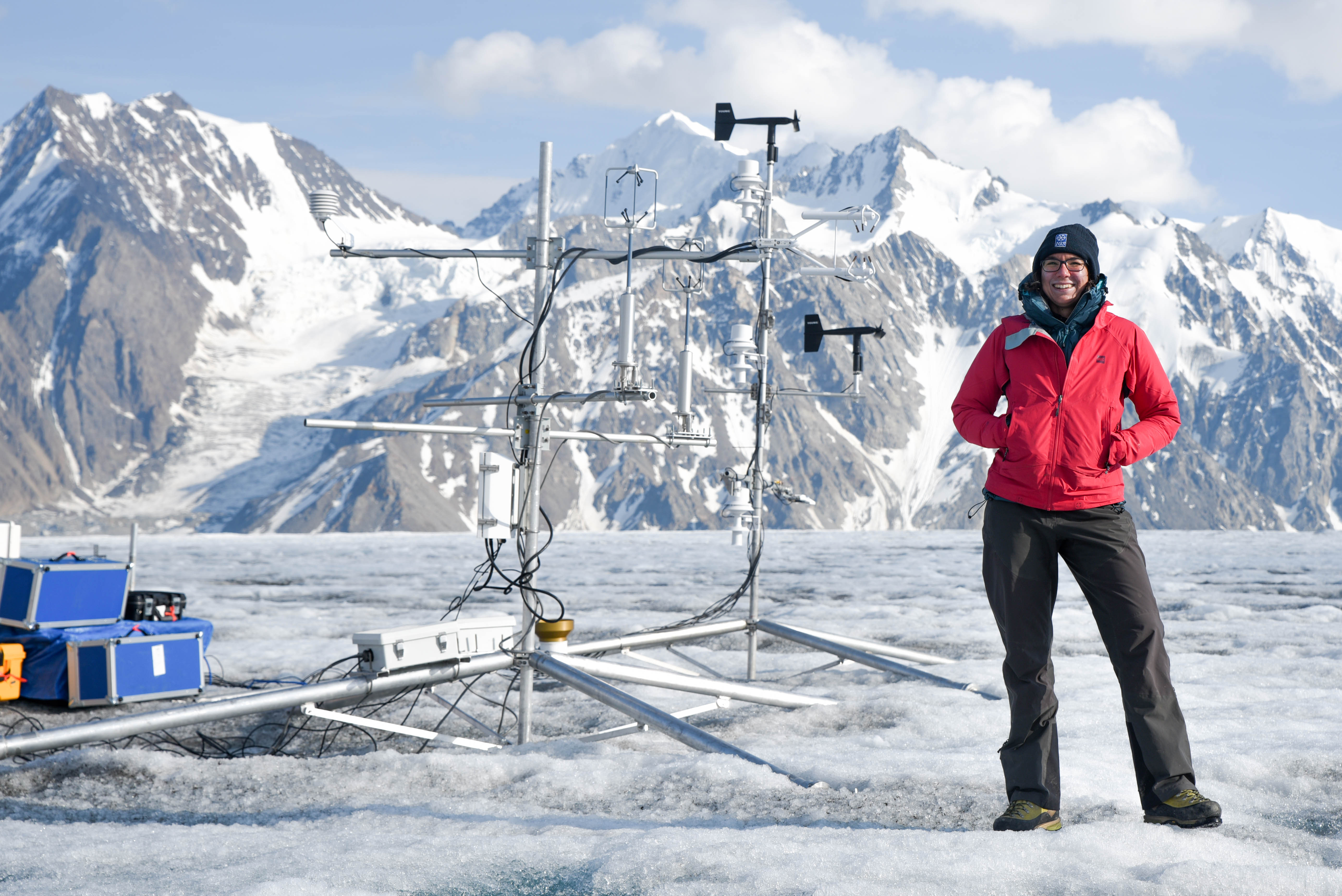Tracking BC’s vanishing glaciers
December 4, 2019

December 4, 2019

Western Canada’s glaciers are retreating quickly in the face of climate change, potentially putting BC’s water supply, agricultural output and power production at risk. UBC geophysicist Valentina Radic is working to improve projections of glacier loss, and its impact on stream flow and sea level rise.
Glaciers' world-wide retreat is a direct result of global warming, and their mass loss is a significant contributor to sea level rise. Loss of mass from glaciers accounts for about 30 percent of ongoing sea level rise – the other 30 percent comes from the mass loss of ice sheets and the rest comes from thermal expansion of the oceans. The current rate of global sea level rise is about 3 mm per year—over the last three decades the global sea level has risen by about 10 cm.
Glaciers can impact streams and rivers by changing the quantity and timing of their streamflow, but can also modify biochemical and biological properties of the streams. For example, dissolved organic material in glacier runoff helps sustain aquatic ecosystems. With glacier melt-water gone, the future of these ecosystems is at risk.
Most of our major rivers are sourced at glaciers, including the Fraser, Columbia, North Saskatchewan, Athabasca, Bow and Red Deer rivers. Glacier-fed rivers are essential for municipal water supply, agricultural irrigation and hydropower. Average thinning rate of BC glaciers equates to 20 km3 of ice disappearing annually—like losing one large Himalayan glacier every year.
The coming decades will see rapid and unprecedented changes to glaciers worldwide, but we don’t know how individual river basins will be impacted by the loss of glacier ice in their headwaters. We need to narrow down the uncertainties in projections.
Simulations of glacier melt are often based on semi-empirical, simplified models that need to be calibrated with actual observations at the glacier. Since observations are available for fewer than one percent of mountain glaciers worldwide, the projections are highly uncertain. In contrast, physics-based models are based directly on surface energy balance (incoming and reflected solar radiation, longwave radiation, and turbulent heat fluxes). They’re universally applicable to any glacier surface. Physics based models need meteorological variables and energy fluxes at or in the vicinity of the glacier. Few glaciers have those type of observations, so the challenge is to find novel ways to move towards physics-based models that are applicable with limited observations.
Yes, every summer. One of my research objectives is to directly measure energy fluxes at glacier surfaces so that we can evaluate the performance of physics-based models. Since 2014, my team has conducted a series of field experiments in summer using specialized sensors at three mountain glaciers in western Canada. In particular, we are focused on measuring turbulent fluxes (exchange of heat between air and glacier surface by turbulent eddies) in order to develop better models of these fluxes. By advancing the modelling of glacier melt, we’ll ultimately be able to provide projections of glacier contribution to streamflow at the level of detail necessary to inform local policy makers and communities.
We honour xwməθkwəy̓ əm (Musqueam) on whose ancestral, unceded territory UBC Vancouver is situated. UBC Science is committed to building meaningful relationships with Indigenous peoples so we can advance Reconciliation and ensure traditional ways of knowing enrich our teaching and research.
Learn more: Musqueam First Nation